Sensor Sweep: Poul Anderson and D&D, Gollum, Castle of Llyr, Insanity’s Children
Monday , 9, December 2019 Sensor Sweep Leave a commentRPG (Goodman Games): Although most fans of fantasy fiction and RPGs 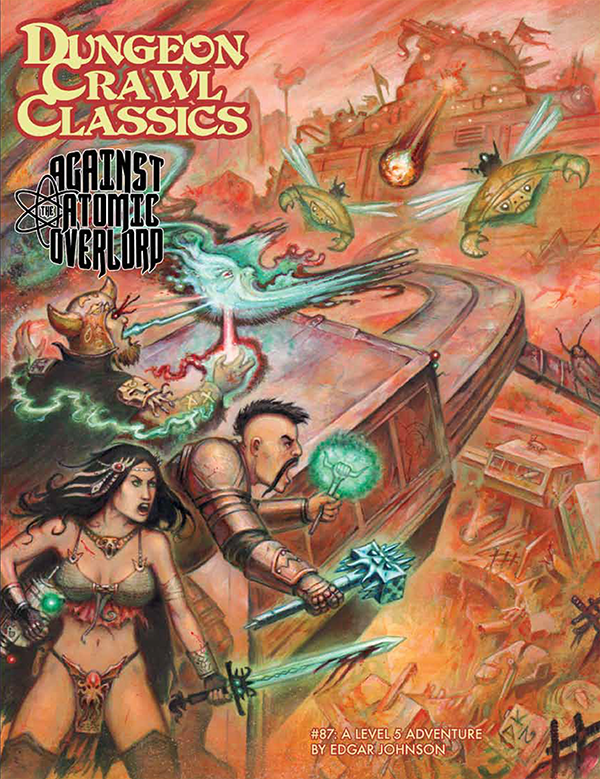 assume that the classic “old school” alignments of Law, Neutrality, and Chaos are derived from Michael Moorcock’s Eternal Champion series of stories, some will be shocked to discover that Moorcock openly borrowed that concept from Anderson. In his novel, Three Hearts and Three Lions (a book that, as we’ll see, had a huge impact on D&D), Anderson tells of a battle between the forces of Law and Chaos. Law is represented by humanity and the medieval Church.
assume that the classic “old school” alignments of Law, Neutrality, and Chaos are derived from Michael Moorcock’s Eternal Champion series of stories, some will be shocked to discover that Moorcock openly borrowed that concept from Anderson. In his novel, Three Hearts and Three Lions (a book that, as we’ll see, had a huge impact on D&D), Anderson tells of a battle between the forces of Law and Chaos. Law is represented by humanity and the medieval Church.
Comic Books (Paint Monk): Conan and the Kushite queen Tananda are at a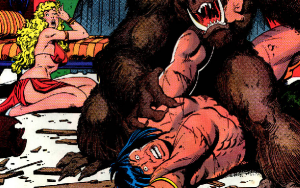 stand-off. The queen is determined to torture Diana, who she suspects of being a political tool and a spy of the cunning Tuthmes. But Conan, her new captain-of-the-guard, isn’t having it. He barks at her, telling her to put down the whip. The political climate in Tananda’s city is tense, and punishing Diana will only rile up rival nobles.
stand-off. The queen is determined to torture Diana, who she suspects of being a political tool and a spy of the cunning Tuthmes. But Conan, her new captain-of-the-guard, isn’t having it. He barks at her, telling her to put down the whip. The political climate in Tananda’s city is tense, and punishing Diana will only rile up rival nobles.
Art (Dark Worlds Quarterly): If you are like just about every person on the 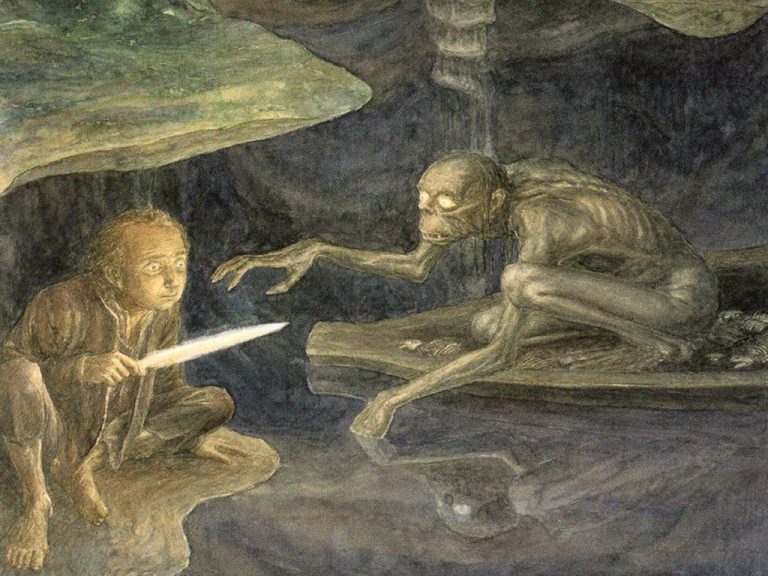 planet you have this great sculpture in your office or den. We all got them when we bought the first set of DVDs for The Fellowship of the Ring. Anyway, this got me thinking of all the versions of the “nasty little stinker” before the film. Unfortunately, JRR never drew him first. Tolkien was a good self-taught artist but he preferred the landscapes of his world to the characters.
planet you have this great sculpture in your office or den. We all got them when we bought the first set of DVDs for The Fellowship of the Ring. Anyway, this got me thinking of all the versions of the “nasty little stinker” before the film. Unfortunately, JRR never drew him first. Tolkien was a good self-taught artist but he preferred the landscapes of his world to the characters.
Black Friday Picks (DMR Books): The three sword and sorcery anthologies 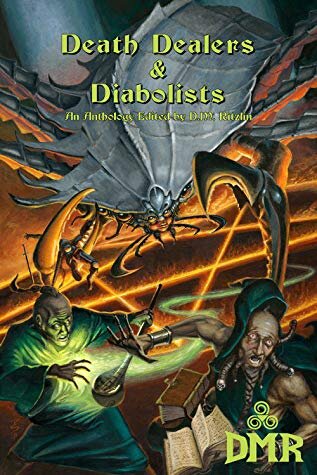 that DMR released in the last few months must take precedence. S&S started out at the short story/sub-novel length and that is—arguably—still the sweet spot when it comes to tales of bloody mayhem and dark magic. The two-fisted release of Death Dealers & Diabolists—with Warlords, Warlocks & Witches following close upon its blood-stained heels—is possibly the most devastating one-two punch in the history of S&S anthologies. If I had to pick one to buy, it would be DD&D, but don’t short yourself. Buy both.
that DMR released in the last few months must take precedence. S&S started out at the short story/sub-novel length and that is—arguably—still the sweet spot when it comes to tales of bloody mayhem and dark magic. The two-fisted release of Death Dealers & Diabolists—with Warlords, Warlocks & Witches following close upon its blood-stained heels—is possibly the most devastating one-two punch in the history of S&S anthologies. If I had to pick one to buy, it would be DD&D, but don’t short yourself. Buy both.
Warhammer Fiction (Track of Words): Reading Nate Crowley’s fantastic 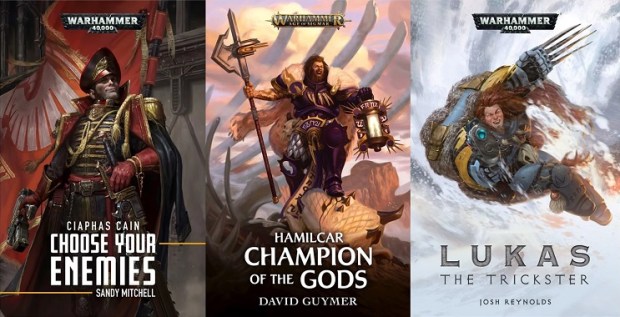 40k novella Severed I was reminded that Warhammer fiction isn’t generally known for its humour. The clue is in the title, really (WARhammer), and certainly Warhammer 40,000 is renowned for being properly dark. The commonly-used term grimdark comes from a core tenet of 40k, after all – “in the grim darkness of the far future there is only war”. In amongst the grim, the dark and the downright nasty, however, I think there’s room for a bit of humour now and then, and certain authors – Nate included – seem to have the knack for adding a little (or a lot, in some cases) of levity into some ot their Warhammer stories.
40k novella Severed I was reminded that Warhammer fiction isn’t generally known for its humour. The clue is in the title, really (WARhammer), and certainly Warhammer 40,000 is renowned for being properly dark. The commonly-used term grimdark comes from a core tenet of 40k, after all – “in the grim darkness of the far future there is only war”. In amongst the grim, the dark and the downright nasty, however, I think there’s room for a bit of humour now and then, and certain authors – Nate included – seem to have the knack for adding a little (or a lot, in some cases) of levity into some ot their Warhammer stories.
History (Karavansara): Yes, say it aloud… The Women’s Black Hussars of Death. Why they never taught me this sort of stuff when I was in school? 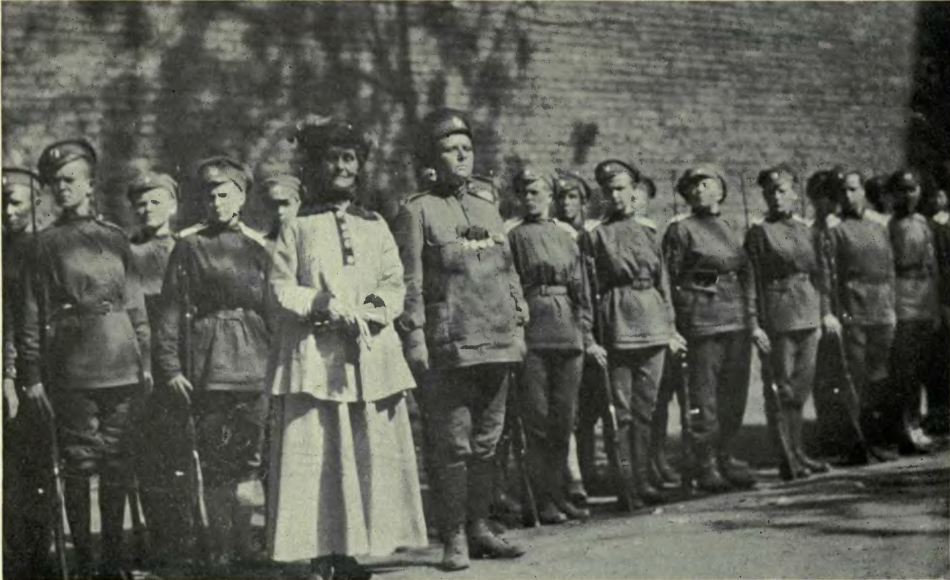 The Women’s Battalions of Death were all-female units formed in 1917 by volunteers serving on the side of the Russian Provisional Government, after the February Revolution. The woman who had dreamed up this brilliant idea – with the purpose of upholding the revolution and shaming men into action – was Maria ‘Yashka’ Leontevna Botchkareva, by all means a formidable woman.
The Women’s Battalions of Death were all-female units formed in 1917 by volunteers serving on the side of the Russian Provisional Government, after the February Revolution. The woman who had dreamed up this brilliant idea – with the purpose of upholding the revolution and shaming men into action – was Maria ‘Yashka’ Leontevna Botchkareva, by all means a formidable woman.
Fiction (Matthew Constantine): The third book in Lloyd Alexander’s 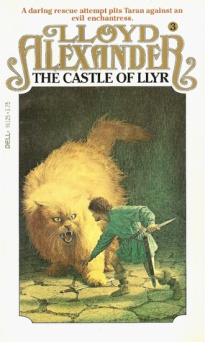 Chronicles of Prydain, The Castle of Llyr finds Taran and Eilonwy about to set off on a journey. It seems that Eilonwy is to be taught how to be a proper princess and eventually be married off. Taran is conflicted, which by the previous book seems to be his wont. We meet some new characters and familiar characters make their return. One of the things I like about this book is how Alexander flips the script on Taran’s relationship with a potential romantic rival.
Chronicles of Prydain, The Castle of Llyr finds Taran and Eilonwy about to set off on a journey. It seems that Eilonwy is to be taught how to be a proper princess and eventually be married off. Taran is conflicted, which by the previous book seems to be his wont. We meet some new characters and familiar characters make their return. One of the things I like about this book is how Alexander flips the script on Taran’s relationship with a potential romantic rival.
Fiction (Mewsings): George MacDonald is a key figure in the development of modern fantasy. A friend of Lewis Carroll (whose Alice in Wonderland he read to his children in manuscript, and encouraged the Reverend Dodgson to publish), and an influence on the Inklings (C S Lewis first read Phantastes in 1916 and went on to champion MacDonald’s writings; Tolkien’s Smith of Wootton Major was the result of his trying, and failing, to write an introduction to MacDonald’s The Golden Key).
Fiction (DMR Books): It has been noted over and over and over that 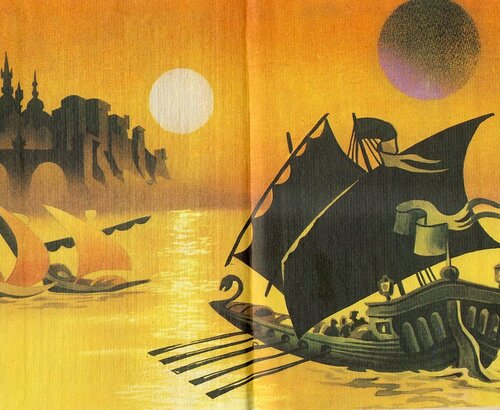 Brackett was a lifelong fan of Edgar Rice Burroughs. That’s cool. I can say the same about my ownself. Proud of it. However, we know that Leigh was also a fan of one A. Merritt, an author who loomed just as large over the SFF scene of the ‘20s, ‘30s and ‘40s of Brackett’s youth as ERB. In fact, it can definitely be argued that Merritt was the stronger horse in that scene during the ‘30s and ‘40s when Leigh was finding herself as a writer.
Brackett was a lifelong fan of Edgar Rice Burroughs. That’s cool. I can say the same about my ownself. Proud of it. However, we know that Leigh was also a fan of one A. Merritt, an author who loomed just as large over the SFF scene of the ‘20s, ‘30s and ‘40s of Brackett’s youth as ERB. In fact, it can definitely be argued that Merritt was the stronger horse in that scene during the ‘30s and ‘40s when Leigh was finding herself as a writer.
Awards (Kairos): we’ve now gained enough distance from the Sad/Rabid Puppies campaigns to do a proper postmortem on the Hugos. To recap, author Larry Correia started the Campaign to End Puppy-Related Sadness when he smelled something rotten among the oldpub clique that hands out the Hugo Awards. He set out to prove that winning a Hugo has less to do with literary merit and almost everything to do with scratching the right backs while having the right politics.
RPG (Pits Perilous): Sorcery. The Dark Arts. These words conjure up images of occult knowledge wrestled from forgotten old tomes and worked in guilty secrecy. Magic is sinister. Evil. It comes with a whiff of brimstone at great personal cost; but such is its price. Magic is a deal with the devil, a Faustian bargain that underscores the sometimes corrupting force of ambition. But D&D has turned magic into a neutral energy to be manipulated, an undiscovered science exploited by studious and charming magicians to fight evil. Quasi-Christian clerics work cheerily alongside wizened spell casters despite the adversarial nature of their occupations, and there’s nothing wrong with this except that magic loses some of its edge and, shall we say, much of its danger.
Book Review (Men of the West): One thing about which every single one of 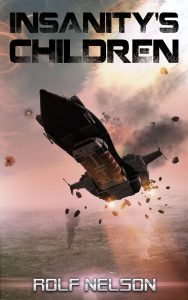 us agrees is that Rolf Nelson’s books are fantastic. His The Stars Came Back is one of the finest stories ever written. Yes, it is written in screenplay format, but that does not matter. It takes a couple of pages to get used to it, and then – BOOM. You are whisked away into one of the most intriguing sci-fi stories penned in the past 50 years He followed that up with a prequel of sorts, The Heretics of St. Possenti, which is less sci-fi, and more foundational to the overall world that these stories inhabit. Though not really a sci-fi book, it is fantastic,and should be read by everyone.
us agrees is that Rolf Nelson’s books are fantastic. His The Stars Came Back is one of the finest stories ever written. Yes, it is written in screenplay format, but that does not matter. It takes a couple of pages to get used to it, and then – BOOM. You are whisked away into one of the most intriguing sci-fi stories penned in the past 50 years He followed that up with a prequel of sorts, The Heretics of St. Possenti, which is less sci-fi, and more foundational to the overall world that these stories inhabit. Though not really a sci-fi book, it is fantastic,and should be read by everyone.
Greyhawk (Grodog’s AD&D blog): The first question* to ask about this topic 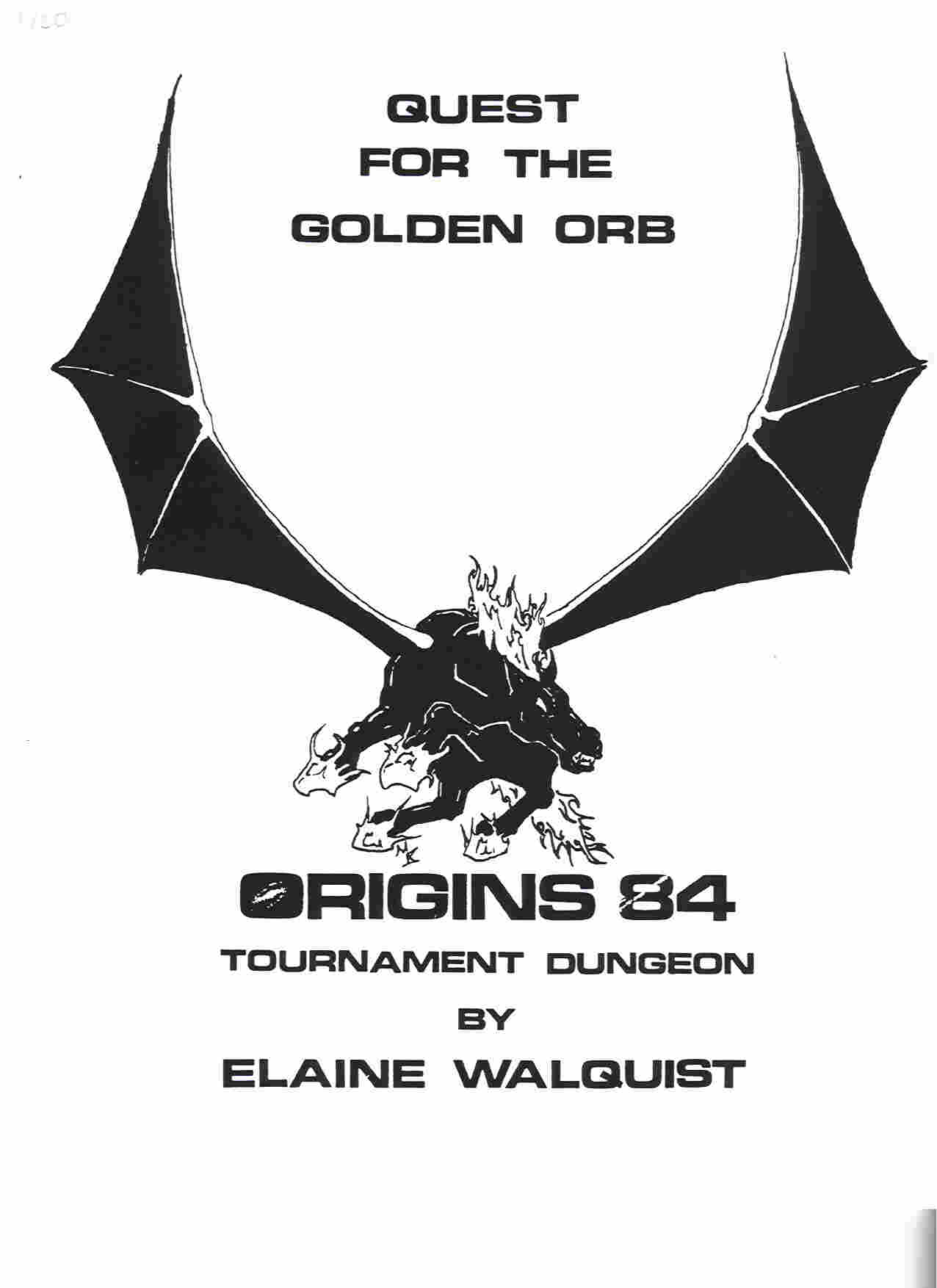 may be, “How does Allan (or anyone else) know what constitutes a rare item in the world of Greyhawk publishing?” Well, Ant “Echohawk” Brooks maintains a Greyhawk Collector’s Guide on ENWorld, and it’s amazingly comprehensive. I link to it on my Greyhawk Links page, and while there are still bits and pieces of info that trickle in with new discoveries, new versions or editions of books, additional Living Greyhawk tourney scenarios catalogued, and new titles written by and for Greyhawk fans being published each year, Echohawk’s work is my go-to guide whenever
may be, “How does Allan (or anyone else) know what constitutes a rare item in the world of Greyhawk publishing?” Well, Ant “Echohawk” Brooks maintains a Greyhawk Collector’s Guide on ENWorld, and it’s amazingly comprehensive. I link to it on my Greyhawk Links page, and while there are still bits and pieces of info that trickle in with new discoveries, new versions or editions of books, additional Living Greyhawk tourney scenarios catalogued, and new titles written by and for Greyhawk fans being published each year, Echohawk’s work is my go-to guide whenever
Cinema (Jon Mollison): Every once in a while Hollywood accidentally does something great on purpose. It’s basically cowboys versus cannibals with the sensibility of a Cormac McCarthy film. The basic plot of a townswoman kidnapped and dragged back to the cave of the wild west CHUDS doesn’t do this thing justice. The meat of the film is the story of four civilized men who step up to the plate to fight for civilization and push back against the ravenous hordes. To do so, they must set aside petty differences, lift up the weaker members of their little posse, and trust to good sense, gunpowder, and cold steel.
Please give us your valuable comment